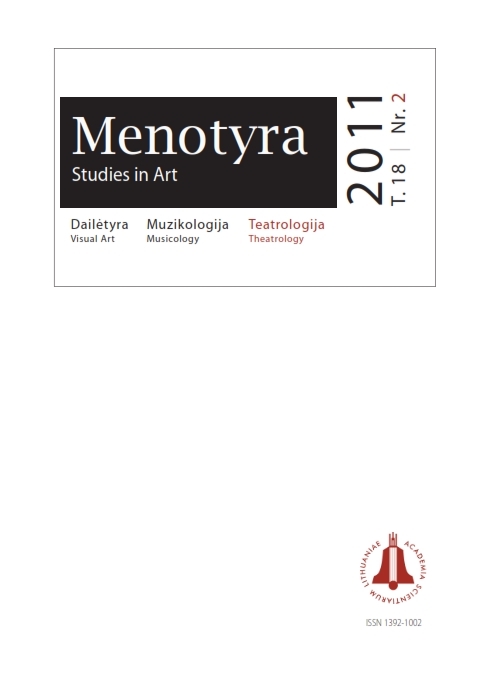Baletų lietuviškumo ir modernumo klausimu: tapatumo formų sąveika ir virsmas Lietuvos balete
Lithuanian ballet: questions of nationality and modernity: inter-relation and transformation of the forms of identity in the Lithuanian ballet
Author(s): Audronė ŽiūraitytėSubject(s): Theatre, Dance, Performing Arts, Fine Arts / Performing Arts, Sociology of Art
Published by: Lietuvos mokslų akademijos leidykla
Keywords: ballet; Lithuania; identity; inter-disciplinary; international; modern; post-modern
Summary/Abstract: Ballet as a synthetic genre encourages the inter-relations and a dialogue of different cultures, especially when its creators – the choreographer, librettist, composer, set designer – belong to the different cultures or the types of national identities. Is it possible to connect the genre of ballet unambiguously with a certain ethnical, national identity, which is desirable in the so called national theatres (for example, in the Lithuanian National Opera and Ballet Theatre)? The genre of ballet has never been popular enough among the Lithuanian composers, although there were certain periods of enthusiasm in the history of Lithuanian ballet. It lacks gifted choreographers, although there were certain memorable productions, which could be described as Lithuanian. From the retrospective point of view in the art of Lithuanian ballet quite bright manifestations of modernity could be traced. But the genre of ballet in the multicultural epoch because of its interdisciplinary origin has a wider international perspective, which in the most recent times was taken away from the composers by choreographers or even set designers.Two very important components of cultural identity of ballet are the animation of cultural memory and the encouragement of conceptual creative phenomenon. Ballet together with other art forms could be treated as the nourishing mean of cultural consciousness and cultural memory. With the help of the consequent and active process it would be possible to establish the individual, ‘Lithuanian’ style of ballet theatre.
Journal: Menotyra
- Issue Year: 18/2011
- Issue No: 2
- Page Range: 165-173
- Page Count: 9
- Language: Lithuanian

